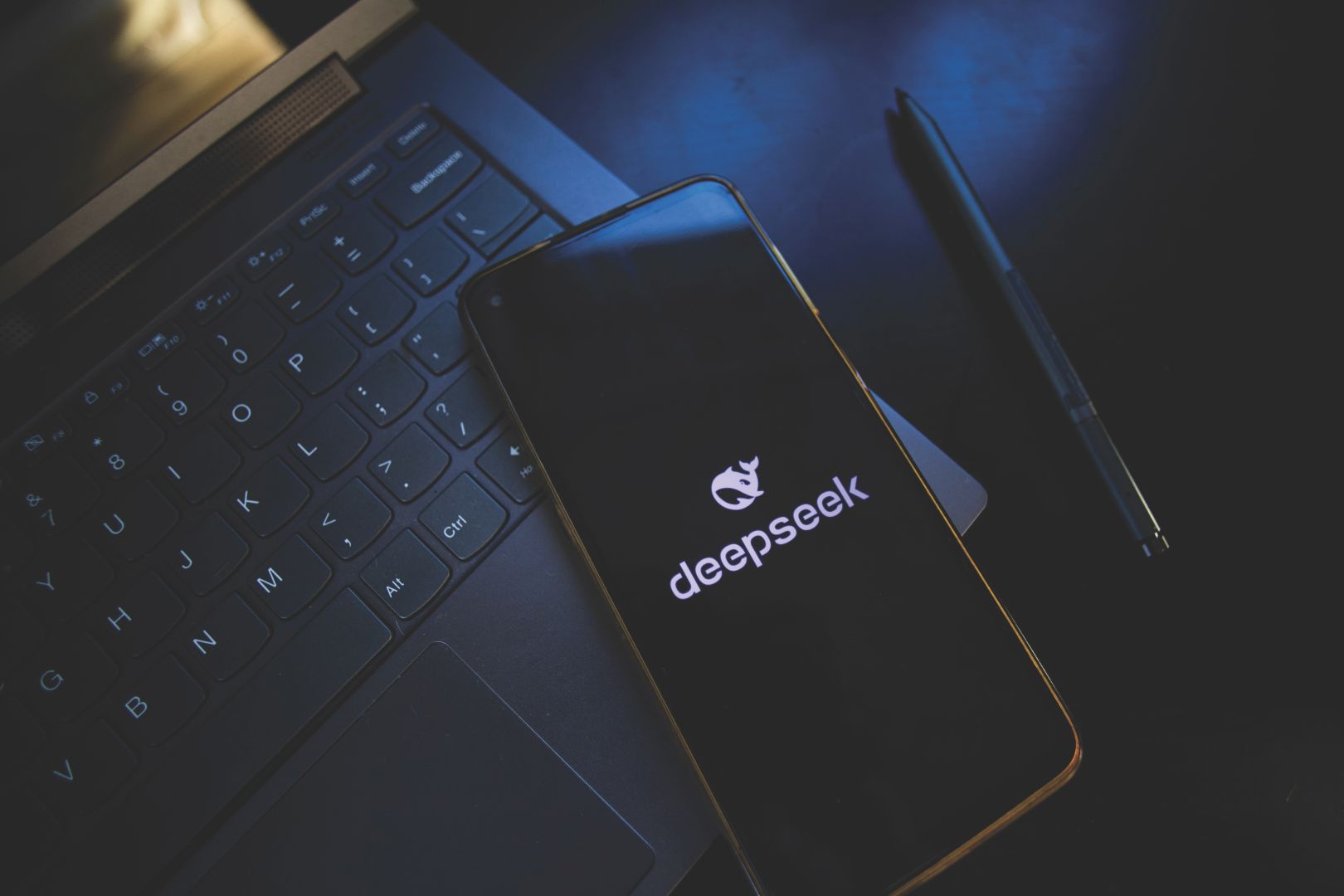DeepSeek may look like an overnight success, but it was only possible because of decisions made a decade earlier. Its launch offers lessons for businesses everywhere.
Only time will tell if Silicon Valley investor Marc Andreessen’s description of DeepSeek’s rise to prominence in late January 2025 as “AI’s Sputnik moment” ages well – but its debut has well and truly thrust Chinese tech companies back into the spotlight. An extensive discussion has ensued – largely focusing on AI’s trajectory in relation to the dominance of a handful of large companies, and on the US-China AI rivalry. However, a more fundamental issue has been largely overlooked – one that has wider significance for companies globally as they make ongoing efforts to accelerate their innovation programs. What factors within China’s entrepreneurial ecosystem contribute to the success of tech ventures?
While attention is being paid, quite understandably, to the specifics of DeepSeek’s AI technology and open-source strategy, a broader understanding of Chinese entrepreneurial ventures can shed light both on what is going on in China, and potentially provide lessons for elsewhere in the world.
Three factors behind DeepSeek’s success
Building on my teaching and research since 2015 at a leading business school in Shanghai, I conducted numerous on-the-ground field interviews with entrepreneurs, investors and experts in China in the aftermath of the Deepseek moment. Their inputs coalesced around three observations regarding the tech ecosystem that point to a nuanced perspective that combines rapid developments with underlying factors developed over time.
First, success did not happen overnight. Although DeepSeek was founded in 2023, its success is arguably rooted in developments from about a decade ago. Its parent is High-flyer Quant, a Chinese AI-centric quantitative hedge fund, which was founded in 2015. Its expertise and infrastructure were funneled into developing DeepSeek’s AI algorithms. This was a period when the startup scene in China grew rapidly, following policy support for mass entrepreneurship announced by then-Premier Li Keqiang at the World Economic Forum meeting in September 2014. While one needs to be careful about inferring the direction of causality (in some cases, government support may have followed already- promising ventures), it soon became apparent that there was a subsequent marked rise in human capital, especially through Chinese returnees from the West and financing from venture capital firms. Additionally, many Western multinationals actively sought to partner with Chinese startups.
While several of the entrepreneurs I studied at that time went on to fail, a number of other notable companies that demonstrate China’s current technological prowess and potential were founded at about the same time as High-flyer Quant – firms such as e-commerce platform Pinduoduo, AI software firm SenseTime, and robotics company Fourier, for example. Although the enthusiasm over entrepreneurship faded over time – and private sector sentiment was adversely affected by stringent restrictions during the Covid years – residual capability stemming from a decade ago partly explains the competence of those companies today.
Second, success did not come out of nowhere, in a literal sense. Place matters. It is not insignificant that DeepSeek is based in Hangzhou, one of China’s leading innovation and entrepreneurship hubs, or that its founder is an alumnus of that city’s leading research institution, Zhejiang University. E-commerce giant Alibaba is based in Hangzhou: its listing on the New York Stock Exchange in 2014 helped position the city as a global tech hub. Then, in 2015, the government-sponsored Hangzhou National Innovation Demonstration Zone was announced, with a focus on supporting tech firms in AI, big data and cloud computing. Of course, innovation clusters are a global phenomenon – but in the Chinese context, local governments play an influential role in the development of different tech niches. This is the “mayor economy,” as economist Keyu Jin describes it. While local government support has declined in many regions following China’s real estate crisis, significant locational advantages have accrued in places like Hangzhou through policy support – and recent success stories have built on these advantages, which were many years in the making.
Third, a “do-more-with-less” approach among Chinese companies predates current geopolitical tensions. Notwithstanding the deep financial pockets of its parent, the significance of DeepSeek’s AI advancement chiefly lies in the relatively limited resources used, a feat that took on added significance due to geopolitical restrictions on China’s access to high-end semiconductors. The experts I spoke to were not astonished by what DeepSeek achieved – suggesting this might reflect a long-standing capacity in Chinese companies to develop pragmatic approaches to innovation management. Such an approach may not lead to new-to-the-world technologies, but it can improve existing ones considerably.
Coincidentally it was in 2015, the year when DeepSeek’s parent and other prominent tech companies were founded, that international business academics Yadong Luo and John Child put forward the idea of Chinese firms’ compositional capability – that is, the capacity to engender novel combinations of otherwise ordinary resources. Such methods are frugal relative to traditional Western models of innovation. It is, perhaps, because of this Chinese proclivity for applied process innovation that the AI entrepreneur and investor – and former Google China CEO – Kai-Fu Lee has predicted that the US will “lead breakthroughs,” but China will be “better and faster in engineering.”
Taken together, these observations offer a nuanced perspective. On the one hand, speed is essential for seizing new opportunities with agility and efficiency, as evident in the swift progress made in AI-related innovations. However, beneath this apparent speed lies a deeper reality predicated on patience: prior capability development, locational advantages, and societally pervasive competencies – such as pragmatic engineering innovation in China – that require time to mature, but are often overlooked because they are not immediately visible.
This paradox highlights a tension between the need for swift action and a long-term strategic view. It is crucial to understanding entrepreneurial success, particularly in the context of China’s rapid technological advancements. No one can predict for how long the resurgent interest in China’s tech companies will last, but what is clear is that although it hasn’t been a linear or painless path, you can’t understand 2025 if you don’t understand 2015.
Learning from DeepSeek
Now, an understandable reaction to the above analysis might be that it is rather obvious to say that innovation hubs like Hangzhou regularly spawn technological success stories such as DeepSeek. However, if it’s that obvious, why had so many observers written China off not that long ago? Many critics have changed their tune since DeepSeek made a splash.
As a neutral observer of China, my point is that we need nuanced, rather than all-or-nothing, thinking when looking at phenomena from afar, especially in a geopolitically charged world. Specifically, my temporal-spatial analysis – meaning that underlying factors took time and were embedded in a particular place – of DeepSeek’s success suggests that it is organizational capability that permits speedy action to be taken, and that this requires patience.
Another reasonable reaction would be to ask: but how does one act with speed when urgent action is needed – that is, when there is simply no time to patiently develop capabilities of one’s own? This is where partnering can be useful.
My research over the past couple of decades highlights the prospect of large corporations accelerating the process of accessing relevant capabilities by partnering with agile startups. I completed the manuscript of my book on the topic, Gorillas can Dance, during Covid lockdowns – since when, enthusiasm among Western multinationals for engaging with Chinese startups has diminished somewhat. Yet a few multinationals remain actively engaged with startup partnering initiatives in China. Despite the geopolitical tensions between the West and China, savvy European multinationals, in particular, have developed a deep understanding of China and continue to engage with local startups, particularly in areas of distinctive strength.
Having had some involvement in many startup engagement initiatives by European companies (for example, as a judge on startup evaluation panels, and as a keynote speaker and adviser), I have seen a recurring theme emerging in the focus on the electric vehicle sector. This is an area of considerable advancement in China. European car companies, automotive suppliers and even chemicals companies whose inputs are used in making electric vehicles have realized that an important way to accelerate their innovation activities is by tapping into the speed of relevant Chinese startups. They, in turn, have benefited from capability-enhancing factors developed over the years, akin to those involved in the DeepSeek success story.
Intriguingly, success is not confined to the ‘superstar’ innovation hubs like Hangzhou. At a startup pitching event at which a European automotive supplier was seeking potential partners, I was taken aback that a number of the most impressive participating startups were from Ningbo, the second city of Zhejiang province of which Hangzhou is the capital. Hangzhou is by far the more important location in terms of innovation output – yet upon further investigation I learned that the Ningbo local government had introduced targeted policy initiatives to nurture various niche technologies. Even less-prominent innovation hubs can pick their battles wisely and selectively specialize in emergent niches.
Taking the long view
The speed-patience paradox calls for managers and entrepreneurs to take a long view on capability development. It means that when thinking about their own activities, as well as seeking partners, they should also think of place (at the subnational level). Implicit in this suggestion is that all of this involves finding and connecting the right people. Thoughtfully connecting the decisions they make around place, partners and people can help companies to navigate a world that demands speed, while recognizing the reality that underlying capabilities typically take time to develop.
In sum, when you see things moving fast – like the remarkable rise of DeepSeek – it isn’t just by chance. It is because of factors and capabilities set in motion many years before. For leaders, the ability to adapt at speed means prior capability development, locational advantages, and societally pervasive competencies that require time to mature but are often overlooked because they are not immediately visible.
While attention is being paid, quite understandably, to the specifics of DeepSeek’s AI technology, success is arguably rooted in developments from about a decade ago. The takeaway is clear. Leaders should be laying the foundations now for 2035, enabling them to pivot at a moment’s notice in the future. Overnight success is often a long time in the making.



